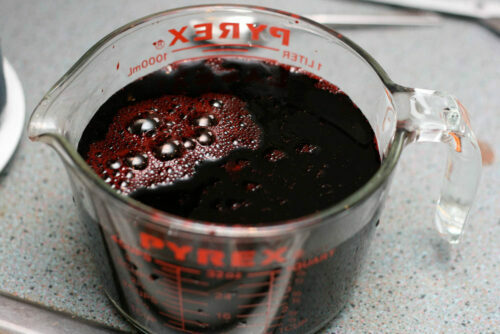Many cultures use animal blood when they are whipping up a meal—not just the Maasai (they actually eat and drink it), who extract it from their living cattle, but Asian to European cultures indulge as well. The American Indians filled the stomach of the animals they killed with finely cut-up organ meats, shredded fat and blood. And blood from chickens and pigs is used throughout the Caribbean.
BTW, if you think the liquid that is found in a package of red meat is beef blood, then think again! The liquid is what meat scientists call “purge,” which is a combination of water and meat proteins that drain from meat. One of those proteins, water-soluble myoglobin, is the main reason for the reddish color of the meat, which is why the water has a red or pinkish hue.
We know that animal blood is a rich source of vitamin D, and other nutrients such as vitamin B12, iron and many other vitamins and minerals.
There is little data available on the nutrient content of animal blood (the USDA Nutrient Database has an entry for “blood sausage”). What we do know is that it can, however, help fortify your diet with iron and other nutrients. Some sources promote animal blood consumption as a means to stave off anemia due to the high bioavailability of its heme iron. There is not a lot of data info about food safety considerations for cooking with blood. Livestock blood is considered a “meat byproduct” under the jurisdiction of the USDA Food Safety and Inspection Service (FSIS).
For pork blood to be certified “edible,” FSIS requirements include that blood come from healthy animals (inspected before and after slaughter), be processed in an establishment under official control and be heat-treated. Pig blood also must come from a country free of classical swine fever.
So where can animal blood be purchased? Well, not at your local supermarket! You will need to know a farmer who will save you the blood from butchering chickens. You can order it from the internet at philamfood.com/martin-purefoods-frozen-beef-blood-10oz.html. Unfortunately this product contains sodium citrate and probably does not come from pasture-raised animals. Animal blood is not exactly easy to find without that farmer friend or willing butcher but don’t despair, you can also find it at many Asian markets.
Cajun Black Pudding
2 cups bread crumbs
1/2 cup diced pork fat
3 sticks celery, minced
1 onion, minced
3 eggs, beaten
1/2 cup cream
2 cups beef blood
1 pound ground meat
1 teaspoon salt
1/2 teaspoon ground black pepper
1/2 teaspoon ground white pepper
1 tablespoon paprika
1 tablespoon oregano
2 teaspoons ground celery seeds
2-3 cloves of garlic, minced
Render the pork fat in a frying pan, and sauté the celery and onion in the fat until soft. Set aside as you mix the bread crumbs with the eggs, cream, blood, salt and seasonings. Add the sautéed vegetables and all of the fat and mix well. Put the ground meat in another bowl and gradually mix in the bread crumb mixture (it mixes in more evenly this way). Pour into a buttered dish set in a bain marie (a container holding hot water into which a pan is placed for slow cooking). Cover the top with foil, and bake at 350°F for 34-45 minutes, or until completely set.
Bon appétit ya’ll!
